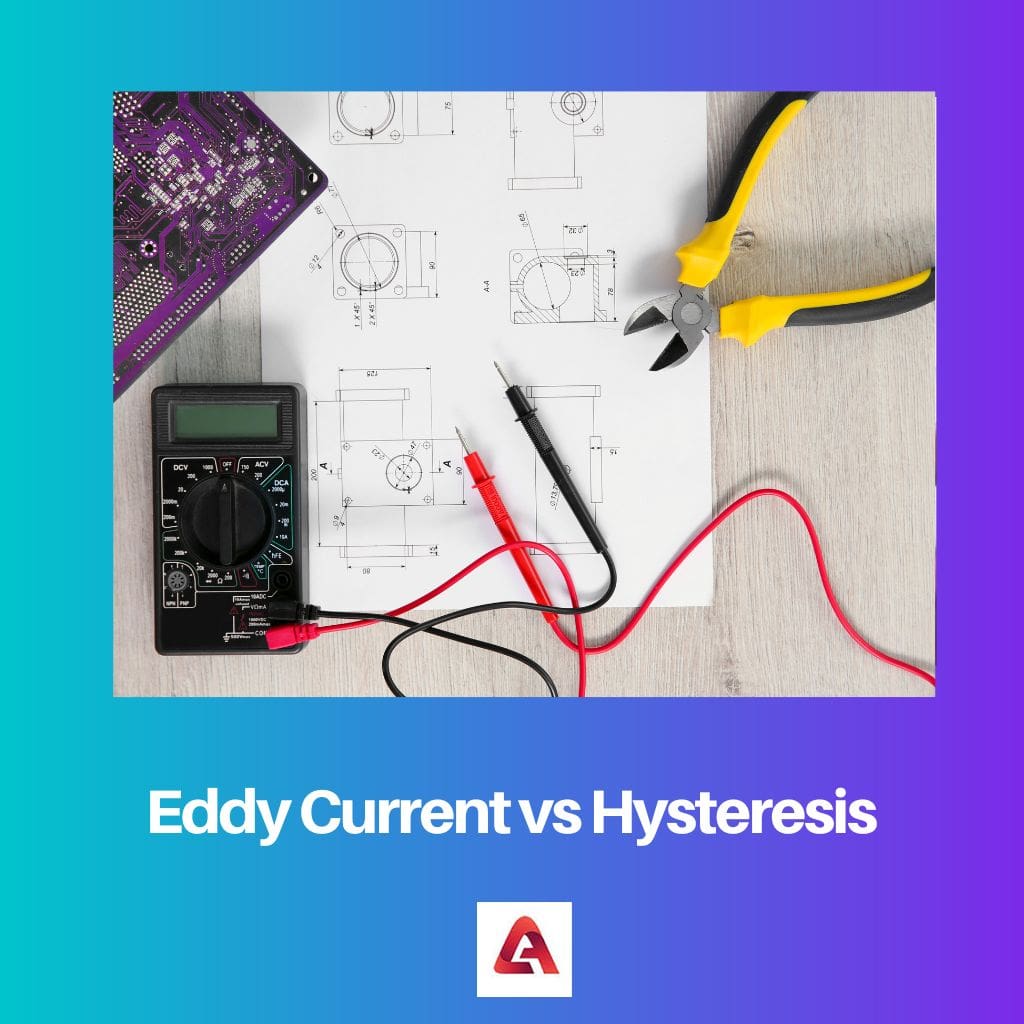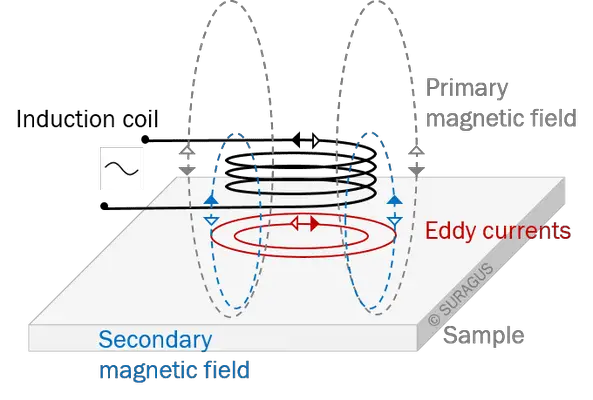Eddy currents are created by electromagnetic induction and can be beneficial or undesirable, such as in transformers. Hysteresis is the phenomenon where a material retains some of its magnetization after being exposed to a magnetic field due to the alignment of magnetic domains.
Key Takeaways
- Eddy currents are induced circulating currents within a conductor exposed to a varying magnetic field, causing energy loss in the form of heat.
- Hysteresis refers to the lag in a material’s magnetic response when subjected to an alternating magnetic field, also leading to energy loss as heat.
- Eddy current losses can be minimized by using laminated cores, whereas hysteresis losses can be reduced by employing materials with low coercivity.

What is Eddy Current?
Eddy currents are electric currents induced in conductive materials, such as metals, by a changing magnetic field. A static or time-varying magnetic field, such as an alternating current (AC), may generate a changing magnetic field. Eddy currents are created in a conductor when the magnetic flux through its cross-section changes. Eddy currents are commonly used in metal detectors, where a changing magnetic field is used to detect metals. They are also used in some electrical motors, such as those in the windings of induction motors and transformers.
Eddy currents are caused by Faraday’s law of induction, which displays that a changing magnetic field creates an electric current in a nearby conductor. A static or time-varying magnetic field can generate a changing magnetic field, such as an alternating current (AC).
When the magnetic field around a conductor changes, eddy currents are generated in the conductor. These eddy currents create a magnetic field of their own, which opposes the original changing magnetic field. This opposition is known as the Lenz Law and is the basis of Eddy current braking, where eddy currents are used to slow down a motor.
Eddy currents are electric currents induced in conductive materials by a changing magnetic field and are used in metal detectors, where a changing magnetic field is used to detect metals.

What is Hysteresis?
Hysteresis is a phenomenon that occurs when the output of a system is not proportional to its input but instead lags. It appears in various techniques, such as mechanical, electrical, and magnetic. It is a consequence of the system’s memory or history and can result in a time lag between the system’s input and output.
In a mechanical system, hysteresis occurs when the output of a system does not return to its original value after the input is removed. For example, a metal rod may return to its original shape after being bent and released. Still, the amount it has been turned will remain in the metal, causing the rod to retain a memory of the original input, known as elastic hysteresis.
In an electrical system, hysteresis occurs when the output of a system does not return to its original value after the input is removed because of the capacitance or inductance of the system, which stores energy and can cause a time lag between the input and the output known as magnetic hysteresis.
In a magnetic system, hysteresis occurs when the material’s magnetic domains are aligned in a particular direction. The material’s magnetization, known as magnetic hysteresis, does not return to its original value after input is removed.
Hysteresis can be beneficial or detrimental, depending on the application. Sometimes, it can store energy, such as in a battery. In other cases, it can lead to instability and limit the performance of a system.

Difference Between Eddy Current and Hysteresis
- Hysteresis is employed for magnetic memory storage, whereas Eddy Currents are used for non-destructive testing.
- Unlike hysteresis, which creates a voltage in the magnet, eddy currents generate a voltage in the conductor.
- Hysteresis needs an external measurement tool, whereas Eddy Currents can be measured directly.
- Hysteresis is employed for power regulation, whereas Eddy Currents are used for sensing applications.
- A fluctuating magnetic field causes Eddy Currents, but an applied magnetic field exhibits hysteresis.
Comparison Between Eddy Current and Hysteresis
| Parameters of Comparison | Eddy Current | Hysteresis |
|---|---|---|
| Produced by | Induction of a magnetic field. | Varying magnetic field. |
| Used for | Sensing applications. | Power control. |
| Used to | Small changes in magnetic fields. | Significant changes in magnetic fields. |
| Rely on | Changing magnetic field to produce a current. | Applied field to have a current. |
| Induced in | Conductors | Magnets |